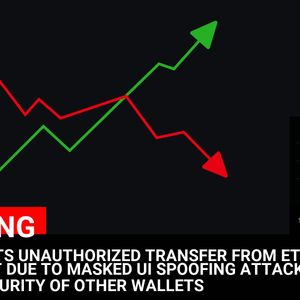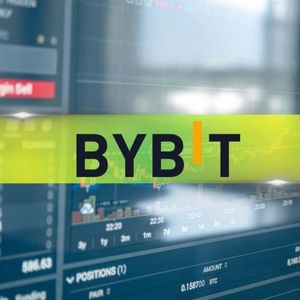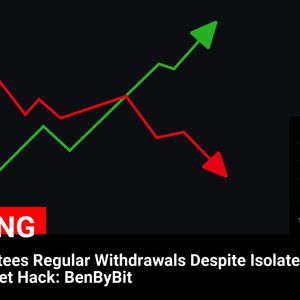Exciting news is brewing in the crypto world! The momentum for crypto Exchange Traded Funds (ETFs) is surging, and the latest development involves XRP. Leading U.S. securities exchange, MEMX, has officially filed with the Securities and Exchange Commission (SEC) to list 21Shares’ Core XRP Trust ETF. This isn’t just another listing; it’s classified as a “Commodity-Based Trust,” a significant distinction that aligns XRP with established crypto giants like Bitcoin and Ether in the ETF arena. Let’s dive into what this groundbreaking filing means for the future of crypto investments. What is an XRP ETF and Why is it a Big Deal? An XRP ETF , or Exchange Traded Fund, is a type of investment fund that holds XRP and is traded on stock exchanges, much like traditional stocks. For investors, this provides a regulated and accessible way to gain exposure to XRP without directly purchasing and managing the cryptocurrency itself. Think of it as buying a share that represents ownership of XRP held in a trust. Why is this “Commodity-Based Trust” classification so crucial? Here’s a breakdown: Regulatory Clarity: By categorizing the 21Shares XRP ETF as a commodity trust, MEMX is leveraging the regulatory framework already established for spot Bitcoin and Ether ETFs. This could potentially streamline the SEC approval process. Investor Accessibility: ETFs are generally easier for traditional investors to access compared to directly buying and storing cryptocurrencies. Listing an XRP ETF on a major exchange like MEMX opens up XRP investment to a wider audience, including institutional investors who may have restrictions on direct crypto holdings. Market Legitimacy: The filing reinforces the growing acceptance of cryptocurrencies as legitimate asset classes. An XRP ETF listed on a regulated exchange signals a maturing market and can boost investor confidence. Diversification: For investors looking to diversify their portfolios within the crypto space, an XRP ETF offers another avenue, beyond Bitcoin and Ether, to gain exposure to different cryptocurrencies. The Rising Tide of Crypto ETF Filings: Riding the Wave of Regulatory Shifts This move by MEMX is not happening in isolation. It’s part of a larger, compelling trend in the crypto industry – a surge in crypto ETF filings. Several factors are contributing to this exciting wave: Shifting Regulatory Sentiment: The political landscape, particularly with the potential shift in administration in the U.S., is influencing regulatory expectations. The crypto industry is hopeful that a new administration may adopt a more favorable stance towards crypto innovation, encouraging the SEC to be more receptive to crypto ETF products. Precedent Set by Bitcoin and Ether ETFs: The SEC’s previous approval of spot Bitcoin and Ether ETFs has paved the way for other crypto assets to follow suit. This has created a regulatory precedent and demonstrated that the SEC is willing to consider and approve crypto ETF products under specific structures. Market Demand: There’s a clear and growing demand from both retail and institutional investors for regulated and accessible crypto investment vehicles. Issuers are responding to this demand by creating and filing for a wider range of crypto ETF products. Cboe BZX’s Precedent: Notably, the SEC had already acknowledged a similar filing from Cboe BZX to list not one, but four spot XRP ETFs, including the very same 21Shares’ product. This earlier acknowledgement by the SEC further strengthens the likelihood of approval for the MEMX filing and signals a positive trajectory for XRP ETF prospects. Commodity Trust ETFs: Why This Structure Matters for XRP The designation of the 21Shares XRP ETF as a “ Commodity Trust ” is not just a technicality; it’s a strategic move with significant implications. Let’s understand why this structure is important: Feature Commodity Trust ETF Other Potential ETF Structures Underlying Asset Classification Classifies XRP as a commodity, similar to gold or oil. Could potentially be structured as a security, which may face different regulatory hurdles. Regulatory Framework Leverages established regulations for commodity-based ETFs. May require navigating less defined regulatory territory for crypto securities. Precedent Mirrors the successful structure of spot Bitcoin and Ether ETFs already approved by the SEC. May lack clear precedents, potentially leading to longer review times and uncertain outcomes. Investor Perception Aligns XRP with established commodity assets, potentially increasing investor comfort and trust. Security classification might raise different questions and concerns for some investors in the crypto context. By opting for the commodity trust structure, 21Shares and MEMX are aiming to present the XRP ETF in a framework that the SEC is already familiar with and has shown a willingness to approve for other cryptocurrencies. This strategic choice could significantly enhance the ETF’s chances of gaining regulatory clearance. Beyond XRP: The Expanding Universe of Crypto ETFs The push for an XRP ETF is just one piece of a much larger puzzle. According to Cointelegraph, issuers are not stopping at Bitcoin, Ether, or XRP. The appetite for diverse crypto ETF products is growing, and we’re seeing filings for: Altcoin ETFs: Beyond the top cryptocurrencies, there’s interest in ETFs focused on other prominent altcoins, potentially offering investors exposure to a wider range of crypto projects and technologies. Crypto Index Funds: These ETFs aim to track a basket of cryptocurrencies, providing diversified exposure to the broader crypto market through a single investment vehicle. This can simplify portfolio diversification within the crypto space. Thematic Crypto ETFs: We might even see ETFs emerging that focus on specific sectors within the crypto ecosystem, such as DeFi (Decentralized Finance) or Metaverse-related cryptocurrencies. This diversification in crypto ETF offerings reflects the maturation of the crypto market and the increasing sophistication of investor demand. As the regulatory landscape evolves and market infrastructure develops, we can expect to see even more innovative and specialized crypto investment products emerge. What’s Next for the 21Shares XRP ETF and the Broader Market? The MEMX filing for the 21Shares XRP ETF is a significant step forward, but the journey to approval is still underway. Here’s what to watch for: SEC Review Process: The SEC will now begin its review of the filing. This process can take time and involves thorough scrutiny of the ETF’s structure, risk disclosures, and market surveillance mechanisms. Public Comments: The SEC typically invites public comments on ETF filings. Industry participants, investors, and other stakeholders can submit their views, which can influence the SEC’s decision. Potential Approval or Delay: While the regulatory environment seems more favorable, SEC approval is not guaranteed. The SEC could approve the ETF, request modifications, or even delay or reject the filing. Market Reaction: Developments in the XRP ETF filing process are likely to influence XRP’s price and market sentiment. Positive signals could boost XRP’s value, while setbacks might lead to price corrections. Conclusion: A Bold Step Towards Mainstream XRP Investment The MEMX filing to list the 21Shares Core XRP Trust ETF as a commodity trust is a powerful indicator of the growing momentum behind crypto ETFs and the increasing acceptance of XRP within the traditional financial system. This move, coupled with the broader trend of diverse crypto ETF filings, suggests that we are on the cusp of a new era of crypto investment accessibility. While regulatory hurdles remain, the direction is clear: crypto ETFs, including an XRP ETF , are becoming an increasingly likely and important part of the investment landscape, potentially revolutionizing how investors engage with digital assets. Keep a close watch on how this story unfolds – it could reshape the future of crypto investing! To learn more about the latest crypto ETF trends, explore our article on key developments shaping crypto ETF institutional adoption.



















